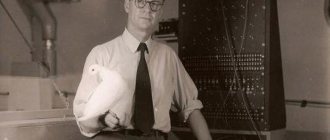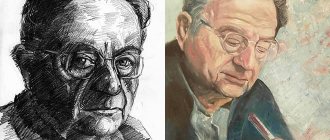Basics of Behavioral Psychology
Behavioral psychology was born in the United States and dominated other fields of psychology in the first half of the 20th century.
J.B. Watson is considered the founder of behavioral psychology. In his report published in 1913, he writes that from the point of view of behaviorism, psychology is an objective experimental branch of the natural sciences, and the goal of behaviorism is to predict and control human behavior.
Behavioral psychology
“Knowing how to achieve control through incentives without resorting to yelling and coercion makes life easier for everyone, educator and learner alike.”
Karen Pryor
Introspective psychology, which is considered biased, is rejected by behaviorism. Behavioral psychologists believe that objective conclusions can only be drawn by studying observable facts (behavior) that can be measured and quantified.
Purpose of Behavioral Psychology
The Behavioral Manifesto, published by J. B. Watson in 1913, marked a turning point in psychology. Behaviorism became its main direction due to its pragmatism.
The idea of behavioral psychology is to guide and change people's behavior so that they can transform their lives. To implement this ambitious project, you need to know the laws of behavior, predict and control it.
That is, in order to be able to influence the result, you need to know what causes it.
Behaviorism and animal experimentation
To implement this concept and apply it to the study of human behavior, behavioral psychology uses a method first tested on animals.
E. L. Thorndike made enormous contributions to the study of animal behavior. His works still play a big role, including in the psychology of human behavior.
Thorndike discovered two main phenomena:
- Animals learn only by trial and error;
- During the course of research, a gradual reduction in unwanted behavior occurs in all animal species. Thorndike produced the same training schedule every time, regardless of which animal was studied.
Later, based on these studies, Watson came to the conclusion that using methods of studying animal psychology, it is possible to create laws that predict and control human behavior.
But the goal of behavioral psychology is not only to control behavior, but also to “create” it.
Pavlov's research
The most prominent studies on the formation of new behavior were and remain the works of I.P. Pavlov's dog conditioning.
Since 1914, Watson (the founder of behaviorism) began to be interested in the works of I.P. Pavlov on conditioning canine reflexes. Indeed, during his work, Pavlov established a whole set of laws about conditioning.
Conditioning is a form of relationship between a stimulus and a reflex (behavior).
It was Pavlov who discovered this phenomenon. In his research, he noticed that the smell of food, the sight of food, or even the sight of the person who usually brought the food was enough to cause dogs to salivate.
Pavlov called this phenomenon a conditioned reflex (or conditioned response), that is, a reflex that depends on environmental conditions.
PsychologyGuide
The behavioral theory of personality also has another name - “scientific”, since the main thesis of this theory states: our personality is a product of learning.
Another image of personality is personality as a system of reactions to various stimuli (B. Skinner, J. Homans, K.-D. Opp). In accordance with this concept, the behavior of each person is determined and controlled by the social environment through language, customs, social institutions, the media, etc. When interacting with other people, a person in any social group “looks after” his interest: if his behavior is encouraged, is positively stimulated, then he will be loyal and friendly towards others and the social system as a whole; if he does not receive recognition from society, he will most likely behave in an aggressive, disorganizing manner. But every person strives to avoid punishment and receive rewards and in this regard uniquely responds to external incentives and social orders. In other words, when considering the problem of personality, analyzing why a person reacts in a certain way to a particular situation, behavioral sociology assigns the main role to the system of incentives, “reinforcements,” drawing a direct analogy between the behavior of humans and animals. Hence, changes in personal behavior are derived from the learning process, understood as the stimulation of “good”, i.e., desired, actions.
Any “good” can be used as incentives: knowledge, power, comfort, respect, fame, money, benevolent attitude of the authorities, etc., but it must be social in its source, which is owned and controlled by society. The more valuable a reward is to a person, the more often he will demonstrate the corresponding behavior. At the same time, the more often in the recent past a person has experienced rewarding influences from others, the less valuable each similar subsequent action becomes for him. When transferring this principle to the level of interpersonal relationships, it is concluded that voluntary interaction between partners exists only as long as each of them believes that he is a winner, that is, that his “contribution” to the situation is less than the benefit he receives or reward.
Behaviorists believe that personality is formed and develops throughout life through socialization, upbringing and learning. They view the early years of a person's life as more important. The foundation of any knowledge and abilities, including creative and spiritual abilities, is laid in childhood. In personality, rational and irrational processes are represented equally. Their opposition makes no sense. It all depends on the type and complexity of the behavior. In some cases, a person can clearly understand his actions and behavior, but in others he cannot.
According to behavioral theory, a person is almost completely deprived of free will. Our behavior is determined by external circumstances. We often behave like puppets and are not aware of the consequences of our behavior, since the social skills we have learned and the reflexes from long-term use have long been automated. The inner world of a person is objective. Everything about him is from the environment. Personality is completely objectified in behavioral manifestations. There is no “façade”. Our behavior is our personality.
Reflexes and social skills are elements of personality. It is postulated that the list of social skills (that is, basic properties, characteristics, personality traits) inherent in a particular person is determined by his social experience (learning). Personality properties and the requirements of a person’s social environment coincide. If a person was brought up in a kind, calm family and was encouraged for kindness and calmness, then he will be kind and calm. If a person is sad, sorrowful and highly vulnerable, then this is also not his fault: he is a product of society and upbringing.
Pages: 1
Pathological gambling as a variant of addiction Due to its prevalence, social and medical consequences, pathological attraction to gambling (pathological gambling - from the English word Gamble - a risky undertaking, gambling) attracts much attention. At the same time, he holds one of the prominent places in the concept of the disease of addictive behavior (Bukhanov...
Psychophysiological characteristics of the affective state Affect. A very strong emotion; More often, affect is understood as a strong negative emotion. Affect can manifest itself either as a short-term violent reaction (for example, an outburst of anger) or as a long-term state (for example, an affective attitude towards a person, place, event, etc.). (N. Tolstykh) Affect of inadequacy. Manifests in f...
Technique for encrypting digital symbols. This is one of the nonverbal subtexts of the methodology aimed at studying intelligence, the author of which is Wexler. In a special table (see the material for this method), in accordance with the samples in the rows of randomly selected numbers, the subject is required to put its designation-symbol under each number, i.e., write it as...
Human conditioning
After studying Pavlov's work, J. B. Watson concluded that studies of animal conditioning provided the key to the study of human behavior.
Watson's idea, as well as all behavioral psychology, is that conditioned reflexes are the basis of human behavior in all life situations.
Examples of human conditioning
To confirm his hypothesis, Watson, together with R. Rayner, conducted one of the most unethical experiments in the history of psychology in 1920 (details here). Researchers tried to instill a fear of rats in an 11-month-old baby named Albert.
They did research: before the experiment, Albert was a fairly calm child. Early on, Watson and Rayner gave him a white rat to play with. Albert looked delighted and showed no fear.
After making sure that little Albert was not afraid of rats, the researchers began making loud noises every time they gave a rat to the child. The surprised Albert began to cry at such moments.
Then Albert began to cry and tremble even at the sight of the rat. Thus, the rat, which was a neutral stimulus, became a conditioned fear stimulus.
Additionally, the fear of the white rat has spread to other furry and white objects such as white rabbits, Santa's beard, cotton, etc.
Behaviorism and social learning theory
Stimulus-response (SR) pattern 2. Parents' task 3. Child development
Unlike previous theories, where the source of a child’s development is innate instincts, the center of the learning theory is the social environment, the influences of which shape a person and are the source of his mental development.
The subject of research in this area of psychology is not the inner world of a person (not his emotions, experiences or mental actions), but externally observable behavior. Therefore, this direction was called behaviorism (from the English behavior - “behavior”).
The roots of this theory are associated with the name of the Russian physiologist Ivan Petrovich Pavlov, who discovered the mechanism of the conditioned reflex. In his famous experiments on dogs, Pavlov showed that initially neutral stimuli for the body (sound, sight, smell) acquire physiological significance if they are associated with vital positive or negative reinforcement. For example, ringing a bell or turning on a light bulb before feeding, after several combinations, begins to cause salivation in dogs. If the same signals are combined with negative reinforcement (for example, electric shock), they will cause a defensive reaction.
This mechanism for the formation of connections between external stimuli and reactions (SR) was taken by the American scientist J. Watson, the founder of behaviorism, as the basis for the formation of human behavior in general and child development in particular. However, this mechanism was significantly expanded and enriched with new concepts.
Thus, the outstanding American scientist B. Skinner introduced the concept of instrumental (or operant) conditioning. If in classical conditioning a connection is established between stimulus and response, then in instrumental conditioning certain forms of behavior are associated with subsequent reinforcement. If any sequence of actions triggers reinforcement, those actions will be repeated.
For example, if a dog is given a piece of sugar every time it stands on its hind legs and “dances,” it is likely to repeat this action often in order to get the desired reward. This pattern also exists in humans. When parents reward a child for good behavior, this reward is viewed by behaviorists as positive reinforcement that reinforces desired behaviors. Punishment, on the contrary, is negative reinforcement that inhibits a child's bad behavior. Thus, the child learns to behave correctly and reinforces socially acceptable forms of behavior.
However, the stimulus-response (SR) design soon revealed its limitations. As a rule, stimulus and response are in such complex relationships that it is impossible to trace a direct connection between them.
One of the largest representatives of neobehaviorism, E. Tolman, introduced a significant amendment to this scheme. He proposed placing a middle link, or “intermediate variables” (V), between S and R, as a result of which the scheme took the form of SVR.
By intermediate variables, Tolman understood internal processes that mediate the effect of a stimulus, that is, influence external behavior. These include goals, ideas, desires, in a word, the inner mental life of a person. However, these variables themselves are of interest to researchers only insofar as they influence human behavior.
In the 30s of the last century, American scientists N. Miller, J. Dollard, R. Sire and others made an attempt to translate the most important concepts of psychoanalytic theory into the language of learning theory. It was they who introduced the term “social learning” into scientific use.
On this basis, the concept of social learning has been developed for more than half a century, the central problem of which is the problem of socialization. Transforming Freudian ideas, N. Miller and J. Dollard replace the pleasure principle with the principle of reinforcement. They call reinforcement that which increases the tendency to repeat a response.
Did not you find what you were looking for?
Teachers rush to help
Diploma
Tests
Coursework
Abstracts
Learning is the strengthening of the connection between stimulus and response that occurs through reinforcement. The main forms of social reinforcement are praise, attention from adults, their evaluation, etc.
The task of parents is to support the correct, socially acceptable behavior of the child and reject unacceptable forms of behavior and thus socialize him. If the child’s behavioral repertoire does not have an appropriate response, it can be acquired by observing the behavior of the model.
Learning through imitation in social learning theory is the main way of acquiring new forms of behavior. American psychologist L. Bandura placed particular emphasis on the role of imitation. He believed that reward and punishment were not sufficient to teach new behavior. Children acquire new behavior through imitation of a model.
One of the manifestations of imitation is identification, that is, a process in which a person borrows not only actions, but also thoughts and feelings from another person acting as a model. Imitation leads to the fact that the child can imagine himself in the place of the model and experience sympathy for this person.
The famous American psychologist R. Sire introduced the dyadic principle of studying child development, according to which adaptive behavior and its reinforcement should be studied taking into account the behavior of the other partner.
Sire's main focus is on the mother's influence on the child's development. The central point of learning in his theory is dependence. Reinforcement always depends on contact between mother and child. The latter constantly experiences dependence on the parent and the motivation for dependence (an active demand for love, attention, affection, etc.) is his most important need, which cannot be ignored.
At the same time, the child’s development follows the path of overcoming this dependence and changing its forms. It can be seen that in this approach social learning theory is most closely intertwined with psychoanalysis.
The theory of social learning is based not only on the “stimulus-response” scheme, but also on the teachings of Z. Freud. They are close in understanding the relationship between the child and society. The child is seen here as a being alien to society. He enters society like a “rat into a maze,” and an adult must guide him through this maze so that as a result he becomes S like an adult. The initial antagonism between the child and society unites these two directions and reduces development to learning acceptable forms of behavior.
, child development is a purely quantitative process of learning, that is, the gradual accumulation of skills. This learning does not imply the emergence of qualitatively new mental formations, since it occurs in the same way at all stages of ontogenesis. Therefore, in behaviorism we are not talking about the mental development of the child, but about his social learning.
The child’s experiences, ideas, and interests are not the subject of research here, since they cannot be seen and measured. And for behavioral psychology there are only objective methods based on the registration and analysis of external observable facts and processes. This is both the strength and weakness of behaviorism.
The strength of this direction is that it introduced clarity, objectivity, and “measurability” into psychology. Thanks to him, psychology turned to the natural scientific path of development and became an exact, objective science. The method of measuring behavioral reactions has become one of the main ones in psychology. This explains the enormous popularity of behaviorism among psychologists around the world.
The weakness of this concept is that it ignores human consciousness, his will and his own activity. According to the theory of behaviorism, classical and operant conditioning are universal learning mechanisms common to humans and animals. In this case, learning occurs “automatically”: reinforcement leads to “consolidation” of successful reactions in the nervous system, regardless of the will and desire of the person himself. From here, behaviorists conclude that with the help of incentives and reinforcements, any human behavior can be sculpted, since it is strictly determined by them. In this understanding, a person is a slave to external circumstances and his past experience.
Operant conditioning theory (conditioned operations)
In operant conditioning, behavior is determined not only by antecedent stimuli, but also by the various outcomes that accompany it.
The foundations of operant conditioning were laid by the behaviorist B.F. Skinner, who also tried to apply them to complex forms of behavior.
Operant conditioning takes into account the consequences of actions. This raises a fundamental question: how can behavior be influenced by its outcome?
The first answer is that a person or animal understands what their behavior can lead to and acts based on their values. That is, there is a direct connection between the result and behavior.
However, this concept is completely opposed to the position of behaviorism, which holds that any assumptions about internal states of mind, values, or intentions are unscientific.
The second option is that the result influences behavior, but indirectly. To know how, you just need to describe the external conditions that cause the behavior and the consequences associated with it.
It is this answer that Skinner takes as the basis for his research.
Differences between conditional response and conditional operation
There are two main points that clarify the difference between conditioning and operant conditioning:
- When conditioned by an external stimulus, the behavior of animals or people is not accompanied by specific consequences for the environment.
- In operant conditioning, the behavior of humans or animals has an effect on the environment that determines whether the behavior will be repeated.
In a conditioned response, behavior is associated with reflexes: it represents a reaction to a specific stimulus. In operant conditioning, responses to stimuli are viewed not as reflexes, but as complex behavior.
Operant conditioning in education
Having laid the foundations of operant conditioning, behaviorist B.F. Skinner began using them in education and therapy in the 1960s.
According to Skinner, the goal of any learning is to create new forms of behavior in the student. Thus, teaching is nothing more than creating the conditions in which students find themselves. This principle is called “ programmed learning ”.
Provided by SendPulse
Programmed instruction requires setting an educational goal (desired behavior) and defining steps to follow (pedagogical development) to achieve it.
Skinner advocated an education system that met the following criteria:
- Continuous interaction between the student and the taught discipline;
- Teaching only that part of the discipline that is closest to the student’s current capabilities;
- Training must correspond to the student’s capabilities and must necessarily lead to an increase in knowledge;
- The student must be actively interested in the discipline and see his results in its study;
- The possibility of errors in training should be minimized.
To strictly adhere to these criteria, Skinner developed a "teaching machine", which in some ways is the ancestor of educational software used today.
However, Skinner's enthusiasm for creating a new educational system met cultural resistance, and his program was challenged.
Operant conditioning in therapy
In addition to the educational sphere, B.F. Skinner developed conditioning programs in the field of therapy.
Before Skinner, behavior therapy was based on classical decontamination procedures developed from the work of Pavlov.
Skinner proposed replacing these procedures with therapeutic methods based on operant conditioning. It is about replacing unwanted behavior with desirable behavior through the intervention of a therapist.
Modification of unwanted behavior can also be carried out by the patient himself. This type of behavior therapy requires good self-control. It involves teaching the patient to control the stimuli associated with the problem behavior.
Psychodynamic theories of personality
The starting points of the psychodynamic theory of personality were presented by S. Freud within the framework of the theory of “classical psychoanalysis” he developed. From the point of view of S. Freud, the key driving factor in personality development are innate instincts, which can be grouped into two main groups: life instincts (Eros) and death instincts (Thanatos). The researcher considered sexual instincts, the energy of which he called “libido,” to be no less significant for the development of personality. Later, the term "libido" was used by Freud to describe the energy of all life instincts. S. Freud also proposed three main personality structures, including:
- Id (It) – the source of motivating energy necessary to ensure the vital activity of the individual; Initially, this energy is realized in sexual and aggressive drives, which form the fundamental part of the Id; the key principle of the functioning of the Id is the pleasure principle;
- Ego (I) – a substructure of the personality that is responsible for making decisions;
- Superego (Super-I) is a system of values and norms of behavior that are accepted in society, on the one hand, and a system of punishments for violating these rules, on the other.
In accordance with this system, the personality functions as follows: Ego, taking into account the principle of reality, tries to satisfy the needs of Id, coordinating them with the requirements of Superego. Ego, Id and Superego are in constant struggle, conflicts between them can lead to mental and somatic illnesses.
However, the psychodynamic direction is not limited only to the concept of S. Freud. An important stage in the development of personality theory was the emergence of new supporters of the psychoanalytic movement, who criticized Freud and proposed their own concepts. These researchers include A. Adler and C. G. Jung.
According to A. Adler, integrity, creativity and the self-determining essence of the individual are of particular importance, and the driving force of its development is the desire for superiority (which, for example, can be dictated by compensation for feelings of inferiority caused by childhood events). Each person has a special, unique lifestyle, based on which he strives to achieve his goals. To understand a person requires a desire to understand his lifestyle. In Adler’s concept, a person appears not only as something whole in itself, but also as part of a much larger whole: family, circle of friends, acquaintances, society, humanity, belonging to which is consistent with his social interests.
The concept of C. G. Jung played a special role in psychology.
Personality in behaviorism
One of the main misconceptions is that supposedly behavioral psychology denies the existence of human consciousness and opposes the study of thought.
But this is not true: although Watson (the founder of behaviorism) objected to the study of internal psychological phenomena, Skinner (by far the most famous behaviorist) argued that they could be studied and investigated. It's just that, according to Skinner, these internal processes are too difficult to observe, so he did not take them into account in his research.
Skinner assumed that people cannot control their behavior. He argued that behavior depends only on the environment.
Skinner clearly advocated determinism and refused to attribute people's achievements to their qualities or mental processes (although he recognized them), such as motivation, thinking, goal setting, etc.
Skinner himself wrote about himself in his biography, published in 1983: “As far as I know, my behavior at any given time was no more than the result of my genetic background, personal history and environmental conditions.”
Behavioral theory of personality.
⇐ PreviousPage 7 of 7
The behavioral theory of personality also has another name - “scientific”, since the main thesis of this theory states: our personality is a product of learning.
There are two directions in the behavioral theory of personality - reflexive and social. The reflex direction is represented by the works of famous American behaviorists J. Watson and B. Skinner (1904-1990). The founders of the social direction are American researchers A. Bandura (1925-1988) and J. Rotter.
The main source of personality development, according to both directions, is the environment in the broadest sense of the word. Personality has nothing of genetic or psychological inheritance. Personality is a product of learning, and its properties are generalized behavioral reflexes and social skills. From the point of view of behaviorists, any type of personality can be formed to order - a worker or a bandit, a poet or a merchant. Skinner argued that personality is a set of social skills formed as a result of operant conditioning. Operant Skinner called any change in the environment as a result of any motor act. A person tends to perform those operants that are followed by reinforcement, and avoids those that are followed by punishment. Thus, as a result of a certain system of reinforcements and punishments, a person acquires new social skills and, accordingly, new personality traits - kindness or honesty, aggressiveness or altruism.
According to representatives of the second direction, an important role in the development of personality is played not so much by external as by internal factors, for example, expectation, goal, significance, etc. Bandura called human behavior determined by internal factors self-regulation. The main task of self-regulation is to ensure self-efficacy, that is, to perform only those forms of behavior that a person can implement, based on internal factors at any given moment. Internal factors act according to their own internal laws, although they arose from past experience as a result of learning through imitation
According to behavioral theory, a person is almost completely deprived of free will. Our behavior is determined by external circumstances. The inner world of a person is objective. Everything about him is from the environment. Personality is completely objectified in behavioral manifestations. There is no “façade”. Our behavior is our personality. Behavioral traits of personality are amenable to operationalization and objective measurement.
The elements of personality in the behaviorist theory of personality are reflexes or social skills. It is postulated that the list of social skills (i.e., properties, characteristics, personality traits) inherent in a particular person is determined by his social experience (learning). Personality properties and the requirements of a person’s social environment coincide.
Thus, within the framework of this approach, personality is a system of social skills and conditioned reflexes, on the one hand, and a system of internal factors: self-efficacy, subjective significance and accessibility, on the other. According to the behavioral theory of personality, personality structure is a complexly organized hierarchy of reflexes or social skills, in which the leading role is played by the internal blocks of self-efficacy, subjective significance and accessibility.
Dispositional theory of personality.
Dispositional (from the English disposition - predisposition) theory has three main directions: “hard”, “soft” and intermediate - formal-dynamic, represented by the works of domestic psychologists. The main source of personality development, according to this approach, are factors of gene-environment interaction, with some directions emphasizing primarily influences from genetics, others - from the environment.
The “hard” direction tries to establish a strict correspondence between certain rigid biological structures of a person: the properties of the physique, the nervous system or the brain, on the one hand, and certain personal properties, on the other. It is argued that both the rigid biological structures themselves and the personal formations associated with them depend on common genetic factors.
The English researcher G. Eysenck (1916-1997) suggested that such a personality trait as “introversion-extraversion” (closedness-sociability) is due to the functioning of a special structure of the brain - the reticular formation. In introverts, the reticular formation provides a higher tone of the cortex, and therefore they avoid contact with the outside world - they do not need excessive sensory stimulation. Extroverts, on the contrary, are drawn to external sensory stimulation (to people, spicy food, etc.) because they have reduced cortical tone - their reticular formation does not provide the cortical structures of the brain with the necessary level of cortical activation.
The “soft” direction of the dispositional theory of personality argues that personal characteristics certainly depend on the biological properties of the human body, however, on which ones and to what extent is not included in the scope of their research tasks. Among the researchers in this area, the most famous is G. Allport (1897-1967), the founder of trait theory. A trait is a person's predisposition to behave in a similar way at different times and in different situations. In addition to traits, Allport identified a special transpersonal structure in a person - the proprium (from the Latin proprium - actually, “I myself”). The concept of “proprium” is close to the concept of “I” in humanistic psychology.
According to dispositionalists, personality develops throughout life. However, the early years of life, including puberty, are considered the most important. This theory assumes that people, despite constant changes in the structure of their behavior, generally possess certain stable internal qualities (temperament, traits). Dispositionalists believe that personality consists of both the conscious and the unconscious. According to dispositional theory, humans have limited free will. Human behavior is to a certain extent determined by evolutionary and genetic factors, as well as by temperament and traits.
The inner world of a person, in particular temperament and traits, is predominantly objective and can be recorded by objective methods. Any physiological manifestations, including an electroencephalogram, speech reactions, etc., indicate certain properties of temperament and traits. The main block of personality within the dispositional approach is temperament. Some authors, for example, even identify temperament with personality. Certain relationships of temperament properties make up types of temperament.
It should be noted that within the framework of the dispositional approach, such an important personal formation as character is actually absent as an independent one. This concept is often identified with the general concept of personality, especially in the clinic, or with the concept of character adopted in the activity approach, which reduces it to the moral-volitional sphere of a person. Thus, within the framework of the dispositional approach, personality is a complex system of formal-dynamic properties (temperament), traits and socially determined properties of the proprium. Personality structure is an organized hierarchy of individual biologically determined properties that are included in certain relationships and form certain types of temperament and traits, as well as a set of meaningful properties that make up the human proprium.
Ego psychology.
In the theory of Erik Erikson (1902-1975), the ego and its adaptive abilities are of greatest importance. Other features of his theory, called ego psychology, include:
— emphasis on changes occurring in the process of development throughout a person’s life;
- emphasis on a mentally healthy person;
— the special role of identity;
- a combination of clinical observations with the study of cultural and historical factors in the study of personality structure.
Central to his theory of ego development is the epigenetic principle. According to him, during his life a person goes through several stages that are universal for all humanity. Personality develops step by step, the transition from one stage to another is predetermined by the individual’s readiness to move in the direction of the further path. Society is structured in such a way that the development of social opportunities is accepted favorably; society contributes to the preservation of this trend, maintaining its pace and consistency of development. [5, 126]
Karen Horney (1885-1952) rejected Freud's position that physical anatomy determined personality differences between men and women, arguing that the decisive factor in personality development was the nature of the social relationship between parent and child. According to Horney, the primary needs of childhood are satisfaction and security. If the behavior of parents does not contribute to satisfying the need for security, this leads to the emergence of basal hostility, which leads to the emergence of basal anxiety - the basis of neurosis. She called basal anxiety the feeling of helplessness in a hostile world.
Horney divided the list of needs into three categories, each of which represents a strategy for optimizing interpersonal relationships in order to achieve safety in the world around us. Each strategy is accompanied by a certain orientation in relations with other people: towards people, from people and against people [13, 224]
Erich Fromm (1900-1980) continued the post-Freudian trend in personality psychology, focusing on the influence of socio-cultural factors on personality. Fromm argued that a certain part of people is driven by the desire to escape from freedom, which is realized through the mechanisms of authoritarianism, destructiveness and conformity. The healthy path to liberation according to Fromm is to gain positive freedom through spontaneous activity.
Fromm described five existential needs inherent in humans: to establish connections; in overcoming; in the roots; in identity; in the system of beliefs and devotion [12, 261]
He believed that basic character orientations are a consequence of the way existential needs are satisfied.
There is only one productive character; according to Fromm, it represents the goal of human development, and it is based on reason, love and work. This type is independent, honest, calm, loving, creative and performs socially useful actions.
⇐ Previous7
Recommended pages:
Behaviorism in everyday life
Conditioning can be seen in many areas of life: from schools to mental hospitals, from the world of sports to prisons.
When the ideas of behaviorism are used in a natural environment, we can talk about natural behavior change.
Examples of behavior change
The goal of behavior change is to replace destructive behavior with more productive behavior.
Below are several effects of using positive psychology methods. Behaviorism - examples from life:
Speech correction
Behavioral psychology allows children with autism who do not speak at all to develop a vocabulary of several hundred words. The same applies to people who have suffered brain damage.
Independence
Behavioral psychology helps adults with intellectual disabilities communicate with others and be more independent. This allows them to develop social skills, perform daily tasks, and even hold down a good job.
Teaching children
The principle of behavior change is very often used when raising children. Potty training is a good example.
Music or sports training
The acquisition of new skills is achieved through repetition of certain actions.
Getting rid of unwanted behavior
Behavioral psychology effectively helps to get rid of bad habits.
Formation of new behavior
Most of the examples mentioned above relate to the learning of “complex” behavior, that is, actions that cannot occur spontaneously (playing the piano, speaking, etc.) For this type of behavior, learning occurs through the formation of new skills and habits.
The results of such training are excellent and sometimes very surprising. For example, B.F. Skinner, the initiator of this method, managed to teach pigeons to play ping-pong with their beaks!
More seriously: behavioral psychology is usually used to train guide dogs, to teach children cleanliness and socializing with peers, etc.
Punishment and behavioral psychology
If conditioning can be effective in changing or creating new behavior, can it also be used to aggressively suppress unwanted behavior?
Sometimes it happens that depending on the circumstances, support alone is not enough, and punishment is also necessary. For example, if a child hits one of his friends, or if he climbs into something he doesn’t want (gas stove, washing machine).
In these cases, punishment can be effective. However, the reprimand must be given immediately (sometimes a simple “no!” may be enough).
When can punishment be harmful?
A harsh reprimand can have negative consequences if it is too harsh or unjustified. Here are the main risks associated with punishment:
- There is no connection with good behavior.
Punishment makes the punished person understand that his behavior is inappropriate. But if there are no clear rules on how to behave, then punishment does not lead to the formation of better behavior.
- Temporary effect.
The consequences of a reprimand are often short-lived and highly dependent on the person imposing the punishment.
- Negative emotions of a person being punished.
The person who has been reprimanded may react with fear or anger. He may begin to fear or even hate the person who punished him or the place where he was punished.
- Delay between action and reprimand.
If punishment does not immediately follow reprehensible behavior, it will not be beneficial. In everyday life it is often difficult to react instantly.
Thus, the distinction between the positive and negative effects of punishment is quite fragile.
This fuels a debate about child-rearing practices: Should we punish them?
Anal phase
The oral period is followed by the anal period (from 12-18 months to 3 years), during which the child first learns to control his bodily functions.
Here the child encounters many prohibitions for the first time, so the outside world appears before him as a barrier that he must overcome, and development takes on a conflicting character. Social coercion, punishment from parents, fear of losing their love force the child to mentally imagine and internalize certain prohibitions. In this way, the child’s Super-Ego begins to form as part of his Ego, where the authorities, the influence of parents and other adults are mainly based, who play a very important role as educators and socializers of the child.
Character traits that are formed at the anal stage, according to psychoanalysts, are neatness, neatness, and punctuality.
Perspectives on behavioral psychology
The behavioral approach in psychology assumes that all people have the same potential, and only differences in the environment contribute to the development of unique personality traits.
Although the idea that “we are the result of conditioning” seems rather pessimistic, for behaviorists this position offers promising educational and therapeutic prospects.
If a person depends solely on the environment, then by changing this environment, you can radically influence his life. Changes in the environment would make it possible to change human behavior and even prevent the formation of bad habits or the development of mental illness.
Behavioral psychology - books
We offer you a list of 4 books that reveal the phenomenon of human behavior.
1. “Coping behavior. Current state and prospects” - a team of authors.
The book is addressed to a wide range of specialists interested in the adaptive capabilities of a person faced with difficult life situations.
2. “How to find the key to solving any situation. 30 rules for effective communication, conflict resolution, behavior management” - Larisa Bolshakova.
This book contains thirty new psychological techniques. How to avoid a conflict situation and find a compromise? How to find a key to any person? What to do to overcome aggression? And much more!
3. “Organizational behavior” - Lyudmila Zgonnik.
The book examines the essence of organizational behavior, various aspects of managing the behavior of individuals and groups in an organization.
4. “The power of habit. Why we live and work this way and not otherwise” - Charles Duhig.
Duhigg's observations and discoveries greatly complement and develop the ideas of Nobel Prize-winning economist Daniel Kahneman, author of the best-selling book Thinking Slow...Fast.
The book is recommended for reading to everyone who is working on themselves and wants to change their life!








